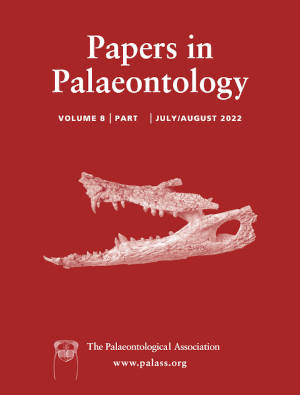Article: Early Cretaceous enigmatic insect group showing unique wing venations and antennal sensilla
Publication: Papers in Palaeontology
Volume:
8
Part:
1
Publication Date:
2022
Article number:
e1402
Author(s):
Hongru Yang, Chungkun Shih, Alexandr P. Rasnitsyn, Dong Ren, and Taiping Gao
DOI:
10.1002/spp2.1402
Abstract
Abstract A new extinct insect group, Magicivena gen. nov. in Magicivenidae fam. nov., with M. sticta sp. nov. (type species), M. elegans sp. nov., M. antennalis sp. nov. and M. sp., is reported as Insecta incertae ordinis based on four specimens from the Lower Cretaceous Yixian Formation of north-eastern China. Magicivenidae are characterized by special antennal structures, such as each flagellomere having two lateral transverse rows of setiferous pits, and forewing venations such as a very short subcostal anterior (Sc), the radial posterior (RS) apparently lost, a weak cubital posterior (CuP), and a single cross-vein crossing the CuP and joining the cubital anterior (CuA) to the first anal vein, all of which differ from those of any other fossil or extant insect taxa documented hitherto. According to the characters forewing with multibranched CuA, hind wing with several long anal veins, and segmented cerci, Magicivenidae should belong to Polyneoptera. The light constitution of a good flier, similar structure of the pterostigma in the hind wing, and transverse furrow on the pronotum all suggest the parallel evolution of Magicivenidae and a dictyopterid family, Alienopteridae. However, the advanced bimotory and loss of an identifiable RS make the possible affinity of Magicivenidae with Alienopteridae problematic, as the latter possess utmost posteromotory and a distinct RS. The antennae of Magicivenidae with their sophisticated sensory apparatus suggest that the four known specimens of Magicivena described here are all males; females are still to be discovered. This new finding enriches the known diversity of Cretaceous insect groups.
